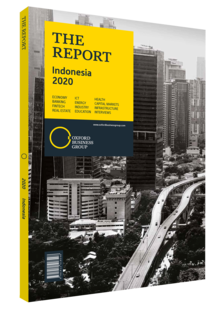Wong Heang Fine, Group CEO, Surbana Jurong: Interview

Interview: Wong Heang Fine
How can new technologies be leveraged to assist urban developments in the medium term?
WONG HEANG FINE: Technology is paving the way for data and analytics to make a major impact on infrastructure development and sustainability. To begin with, everything needs a master plan. We use digital twin technology in our design process, which creates a digital representation of a physical object or system. This allows us to perform various simulations before development commences, and identify and solve problems before they become a reality. With digital engineering models and access to data, we can plan the construction and development of numerous aspects of a city, such as hotels, offices, schools, electrical power stations and hospitals, far more effectively than before. Once construction of a building is completed, systems that use the internet of things (IoT) can monitor the performance of things like air conditioning, hot water and elevators. IoT also enables us to monitor traffic flow on highways, among other things. All of this helps to improve efficiency in the long term, and reduce maintenance and operational costs, which account for 60% of the life cycle costs of a building. Artificial Intelligence offers similar benefits, specifically through machine learning in the design of buildings and infrastructure. Indonesia’s new capital in East Kalimantan will be a great opportunity to use technology the country already has to design and develop the infrastructure for a connected, intelligent city.
What is your outlook for the development of transit-orientated projects in Jakarta?
WONG: Like many other cities, Jakarta has grown outwards, resulting in people taking a longer time to get in and out of the city every day and thereby increasing inefficiencies. Workers want to move closer to the city centre, which encourages us to create more transit-oriented developments, such as mixed-use real estate projects that are directly above transit centres like railway lines or bus stations. This has been done successfully in Singapore, and there is great potential now to replicate this model in Jakarta.
Where can Indonesia apply housing models used in Singapore, particularly with regard to sustainability?
WONG: Singapore’s expertise lies in sustainability; it is in the country’s DNA. It has a small land area and cannot afford to implement projects that will be economically or environmentally unsustainable. Today, Singapore is almost self-sufficient in terms of water provision, which has taken a long time to achieve. Singaporeans have also made sure no space is wasted in public housing developments, and have focused on creating mixed communities. In particular, we have been extremely successful in our urban renewal programmes. As a result, the country’s developments house a mix of people and contain a cross-section of different income earners.
In what ways can lessons learned from Jakarta benefit the construction sector more generally?
WONG: In the construction sector today we can use technology to create master plans and craft sustainable solutions. When it comes to developments in Jakarta, we can apply the lessons we have learned from using digital technology to other cities to the archipelago. The challenges facing Jakarta also present good opportunities to apply new methods for the first time and learn from their results. For example, the impact of rising sea levels makes Jakarta a good location to pioneer flood mitigation measures, and the city’s population density provides opportunities to design and implement buildings that are suitable for such a dense area. We can develop models and solutions that are environmentally and economically sustainable. Moreover, Indonesia has a large and skilled workforce. As a result, we can leverage Indonesia’s market and the abilities of its workforce to support the region’s diverse industries. There is specific potential in agriculture and fisheries, as well as areas where production is more labour-intensive.
You have reached the limit of premium articles you can view for free.
Choose from the options below to purchase print or digital editions of our Reports. You can also purchase a website subscription giving you unlimited access to all of our Reports online for 12 months.
If you have already purchased this Report or have a website subscription, please login to continue.

